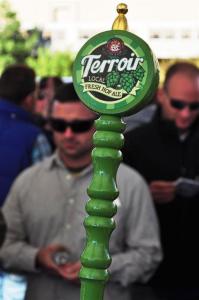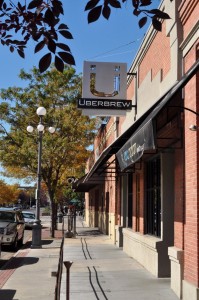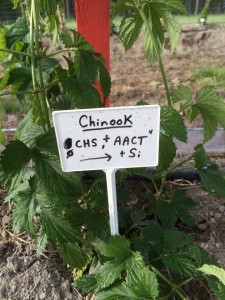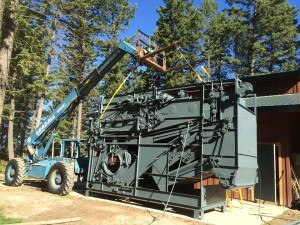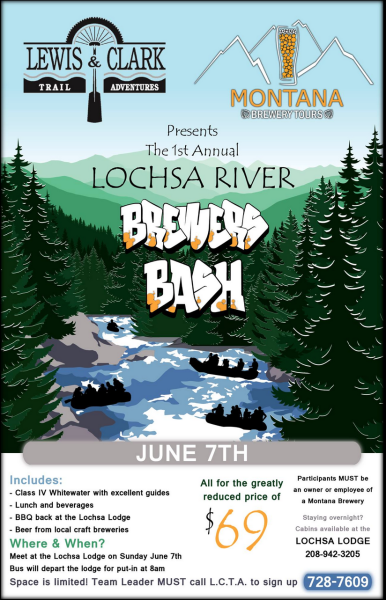News
ON TAP: Montana
Posted On July 15, 2015
Re-posted from Men’s Journal, 2015
You probably already know about the unmatched fly fishing, rock climbing, and mountain biking in Montana. But Big Sky Country is also one of the top craft beer states in America, ranking ahead of even Colorado in breweries per capita. The brewers and outdoors enthusiasts here are cut from the same cloth. So with the help of host Zane Lamprey, we sought them out, finding some of the best adventures — and brews — throughout the state.
Montana Dominates Beer Awards, Dethrones Big Breweries
Posted On June 11, 2015
Re-posted from News Talk KGVO Missoula, on June 10th, 2015
The results are in for the North American Beer Awards and a Montana brewery has beaten big names like Anheuser-Busch and MillerCoors in producing the best American-Style Lager.
Assistant Brewer Eric Rasmussen from the Montana Brewing Company in Billings says he was happily surprised to see the Prohibition Pilsner come out on top.
“To be honest, Prohibition Pilsner getting the gold was a huge surprise and, not to brag, but second place was Coors Original, so anytime you can take down the big boys at their own game… it’s pretty fun stuff,” Rasmussen said.
Montana Brewing Company was just one of 17 Montana breweries that came home with medals, many of them gold.
“Montana doesn’t have a lot of people, but the people here definitely appreciate a beer culture and I think the breweries are reflecting that,” Rasmussen said. “[Montana Brewing Company] walked away with three medals, and then Montana as a state won 31 medals. On a per capita basis we were definitely the top state, but as far as the total medal breakdown goes I think we are either number one or two.”
Montana is certainly on the map for good beer. Below is the list of Montana winners for 2015:
Angry Hanks Microbrewery in Billings won Silver in Scottish-Style Export for “Frost killer”
Bayern Brewery in Missoula won bronze in Helles Lager for “Montana Helles Lager”
Big Sky Brewing in Missoula won silver in Barrel Aged Strong Beer for “Barrel Aged Power Wagon”
Blackfoot River Brewing Co. in Helena won silver in the Lambic category for the “Blackfoot Helambic”
Bozeman Brewing Co. in Bozeman won Bronze in American Style Pale ale for “Watershed Pale Ale” and Silver in Robust Porter for “Plum Street Porter.”
Canyon Creek Brewing in Billings won in three categories. It took gold in Dortmunder/Export for its “MinPln Pils”, Gold in Scottish Style Heavy for “Copper,” and Silver in Irish-Style Red Ale for “Rabbit Head Red.”
Carter’s Brewing in Billings took home Silver in Biere de Garde with “The Keeper 2015.”
Draught Works in Missoula took home a bronze in the Cream Ale Category for “That’s What She Said” and a bronze in the Ordinary Bitter Category for “Shadow Caster Amber Ale.”
Flathead Lake Brewing Co. took home a Silver and a Bronze in the Flanders-Style Red or Brown Ale category for “Barrel 14 Sour” and “Montucky Sour Brown” respectively.
Great Northern Brewing Co. out of Whitefish took home Bronze for American-Style Strong Ale for “Good Medicine Strong Red Ale.”
Katabatic Brewing Co. in Livingston took home Gold in the American Style Amber Ale catagory for “Anabatic Amber.”
KettleHouse Brewing Co. in Missoula won Silver in English-Style Summer Ale for “Fresh Bongwater,” Silver in California Common for “KettleHouse Kommon,” and Gold in Biere de Garde for “Biere de Garde.”
Montana Brewing Co. won gold in the American-Style Standard or Premium Lager with “Prohibition Pilsner”, Gold in Irish-Style Red Ale for “Hooligan’s Irish Red Ale” and Silver in Oatmeal Stout for “Custer’s Last Stout.”
Philipsburg Brewing Company out of Philipsburg won Gold in the Light Ale category for “Otter Water Summer Pale Ale”
Red Lodge Ales Brewing Co. out of Red Lodge won Gold in Doppelbock for “Dos Goatees Doppelbock”, Gold in Efeweizen for “Helio Hefeweizen”, and Bronze in Altbier for “Glacier Ale.”
Tamarack Brewing Company out of Lakeside won Gold in English-Style India Pale Ale for “Core Shot Copper,” Gold in the Specialty/Experimental Beer category for “Raspberry PHunkenstein” and Bronze in English-Style Barely Wine for “I Remember My First Barley Wine…”
Uberbrew in Billings won Gold in Brown Porter for “Stand Down Brown Porter” and Silver in Dry Stout for “Uberstition CCS”
View the list of Winners by Category and Winners By Brewery posted by North American Brewers.org.
The Quest for Drinking Local
Posted On June 11, 2015
Re-posted from Growler Fills, June 10th, 2015
Drink Local. It’s a short, easy phrase that conjures up a variety of images. Most involve a pint of beer in a friendly taproom filled with smiles and friendly banter.
“Drink local” is an accepted virtue in the world of beer. An idea as readily embraced as an ice cream cone on a hot summer day.
But why is drinking local something we seek out, even as some of the best beers from around the world can be found at our local bottle shops? And how local can it get?
“At a small, independent brewery, you can get a product that is vastly superior to the mass produced variety but that doesn’t cost all that much more and was crafted by people you probably know,” says Bill Hyland, Water Enhancement Specialist (a/k/a Head Brewer) forBozeman Brewing Co. in Bozeman, MT. “Small craft breweries are the ultimate mom and pop establishments. They are primarily concerned with quality and their main goal is to satisfy their own home markets.”
But Hyland is quick to point out it is more than just a freshness issue. “There is also, I believe, a certain sense of pride and loyalty that a consumer has for their home town brew,” explains Hyland. “I’ve seen this all over the country but not more so than here in Bozeman. Our locals seem to really love our beer and what we’re about. Everyone who works here also has other connections in the community so in a lot of ways it’s a really big extended family.”
Those community connections are what drives Überbrew in Billings, MT at its local taproom and in its quest to enter new markets. Like many breweries, Überbrew contributes to charities and cultural experiences in the communities in which they sell beer. “We do not just send beer and expect it to sell,” says Mark Hastings, co-owner and Head Brewer. “We have two full time sales representatives who spend the majority of their time building relationships within these communities. Without these local community ties we are just another beer.”
Seth Swingley, co-owner of Mighty Mo Brewing Co. in Great Falls, MT, finds his customers seeking to “drink local” for the community connections as much as the ingredients. This is especially true in Montana, Swingley notes, where there is so much malt barley produced.
“Many consumers know someone who either grows or is involved in getting the malted barley to the local breweries,” says Swingley. “The community connection does not stop there. Many breweries are a community gathering spot, and often have charity nights, where proceeds from the beer sold are shared with local charities.
“Many of our customers never stepped foot in Mighty Mo’s tap room until they attended a Raise-A-Pint night. The people come in to support a cause, and fall in love with the beer and the community concept, and they come back again and again!”
Carl Spurgeon spent the past two years crisscrossing the state of Montana with fellow filmmaker Rob Truax documenting the local beer culture in the film Homebrewd. The two interviewed homebrewers, commercial brewers and historians to find out what drives the creation of beer.
“If there were a common theme it would be that everyone is doing this for the pure love of beer,” says Spurgeon. “Commercial brewers are working harder than they would at other professions while earning less. Hobbyists are experimenting and helping one another break new ground on styles, quality, and beer education.”
“When I hear the phrase ‘drink local’ it means drinking beer closest to its source,” says Spurgeon. “That means closest to where it is brewed, closest to where the barley is produced, closest to where the hops are grown, absolutely as close to every source as possible. For us here in the Northwest, that is pretty easy in general. In Montana, with all of our breweries as well as our excellent water sources, world class barley and proximity to the greatest hops on earth, it’s Heaven!”
Yet, while beer’s most prominent ingredient by volume – water – is usually as local as it gets, brewers commonly tout the use of ingredients from decidedly not-local sources. European base and specialty malts are frequent additions. Southern Hemisphere hops like Galaxy and Nelson Sauvin have hit the American craft beer scene with a frenzy in recent years.
Überbrew’s Hasting explains why using local products is not always the preferred choice. “The short answer is quality,” says Hasting. “We like to source locally made products whenever possible, but currently the barley that is bred, grown and malted in North America is mostly developed for cereal adjunct brewers like AB Inbev and SAB Miller Coors.”
“This is still world class malt but we are looking for low protein, heritage varieties of barley that are bred, grown and malted for all malt, single step infusion mashes like most small craft brewers use. Unfortunately, to source these malts we must import malt from England, Ireland and Germany.”
Überbrew recently began contracting with the Fort Collins Brewery in Colorado to brew and bottle its most popular brands, including White Noise Hefeweizen which took second place for the style at the 2014 World Beer Cup. It is a choice some might argue doesn’t fit within the “local” ethic.
Hastings notes the choice was partly made out of necessity to achieve growth, but also brought tangible benefits to the Billings taproom and production facility. “We simply do not have the millions of dollars required to build a facility like we have access to in Fort Collins. We went through an extensive vetting process of breweries. In the end The Fort Collins Brewery won out for many reasons including the quality of the operation and their willingness to let us participate in every aspect of the brewing process. We owe a great deal of our success to the mentorship we receive from the team at The Fort Collins Brewery.”
Hastings isn’t concerned that some contract brewing might reduce the local nature of Uberbrew’s beer. “We are a Billings, Montana born brewery that is expanding,” says Hastings. “As we expand we hope to create a regional business that is a positive presence in several Montana, Wyoming and Colorado communities. We strive to attain this growth while maintaining our quest to bring our customers a superlative pint experience anywhere Überbrew beer is served.”
Tom Britz did not set out to grow hops, but the Flathead Valley rancher now finds himself at the forefront of small-scale hop growing research in Montana. A chance conversation with local Extension Agent Pat McGlynn kicked off the idea and Britz’s Glacier Hops Ranch will grow more than 45 varieties for testing this year.
“This year will be the third year of our research plot and we’re finding varieties that are vigorous and also varieties that don’t do well in Montana, like the Southern Hemisphere varieties, which all winter-killed here,” explains Britz. “By contrast, we’re seeing solid and vigorous growth from almost all of the US aroma varieties, and some European varieties.”
Britz was elected this spring to the Hop Growers of America board of directors and will chair its new Small Grower Council. He is well versed in the challenges facing small growers, but sees an opportunity to create a niche through different processing methods.
“We looked at several alternative drying options to improve the aromatics, and began collaborating with a producer in Michigan who developed a low heat/no heat method, says Britz. “He brought some of his samples from last year’s harvest to us this winter and said ‘this is exactly what yours will be like.’”
“We sent these samples out to about a dozen of our in-state brewers and the feedback we got was black and white, extremely positive. The difference showed up in the beer. So we are betting on this low-heat/no-heat drying method that has been proven to retain more of the aromatic oils. “
While this “artisan-crafted” drying method takes longer and is more expensive, Britz believes the better quality product will help set small growers like Glacier Hops Ranch apart.
Helping beer become more local is also at the top of Britz’s work. “Glacier Hops Ranch, like many small acreage growers that have popped up from coast to coast over the last several years, has a completely different business model compared to the large-scale growers in the legacy production states of Washington, Oregon and Idaho,” says Britz. “We do not have economies of scale and we do not benefit from multi-generational institutional knowledge. However, we do offer a ‘locally-grown ingredient’ option which I have found to hit a raw nerve – the same raw nerve that has allowed craft breweries to proliferate in recent years.”
And that’s a proliferation we can all embrace in our quest to “drink local.”
1st Annual Lochsa River Brewers Bash
Posted On May 28, 2015
Attention Western Montana Breweries! The First Annual Lochsa River Brewers Bash is approaching! Get your crew together and represent your brewery on this awesome trip. Call Lewis & Clark Trail Adventuresat 728-7609 and sign up today!


